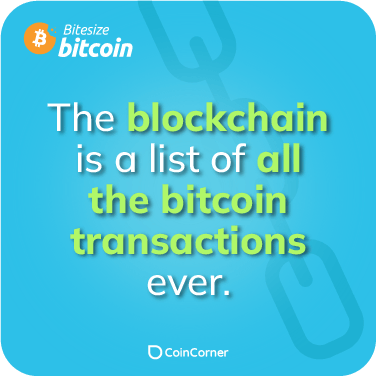What is Blockchain?

The blockchain is often described as a "public ledger" or a "record book" of all Bitcoin transactions ever conducted. It is the foundational technology that underpins the operation of Bitcoin. The concept of a blockchain as a list of all Bitcoin transactions ever can be better understood by exploring the following key points:
1. Transaction Records:
Each time a Bitcoin transaction is initiated, details about the transaction are recorded. This includes the sender's address, the recipient's address, the amount of Bitcoin being transferred, and a digital signature for security and verification.2. Blocks:
These individual transactions are not recorded in isolation. Instead, they are grouped together into blocks. Each block contains a set number of transactions. In Bitcoin, this number can vary but typically includes around 2,000 to 4,000 transactions.3. Linking Blocks:
Blocks are linked together in a sequential and chronological order. Each block contains a reference to the previous block, forming a chain. Hence the term "blockchain."4. Immutability:
Once a block is added to the blockchain, it is extremely difficult to alter the information within it. This immutability is due to the cryptographic properties of the blockchain, which make it resistant to tampering.5. Distributed Ledger:
The blockchain is maintained by a decentralized network of nodes (computers) participating in the bitcoin's network. These nodes validate and record transactions, ensuring the integrity of the blockchain.6. Transparency:
The blockchain is public and transparent. Anyone can view the entire transaction history, making it a trustless system. Users can verify that their transactions were executed as intended, and the public nature of the ledger adds a layer of security and accountability to the network.7. Miners and Consensus:
To add a new block to the blockchain, a process called "mining" is used. Miners solve complex cryptographic puzzles, and the first one to solve it adds a new block. This process, combined with the consensus mechanism, ensures that only valid transactions are added to the blockchain.8. Historical Record:
The blockchain contains an ongoing, historical record of all transactions since the creation of bitcoin. As a result, it serves as a comprehensive record of all Bitcoin transactions, offering full transparency and traceability.9. Security and Trust:
The decentralized and immutable nature of the blockchain adds a layer of trust and security to the Bitcoin network. Users can rely on the blockchain to maintain the integrity of their transactions, and it eliminates the need for intermediaries like banks.10. Evolution and Growth:
The Bitcoin blockchain has grown over time, and as more transactions occur, it continues to expand. It's a living database that reflects the growth and adoption of Bitcoin.Share this fact:





